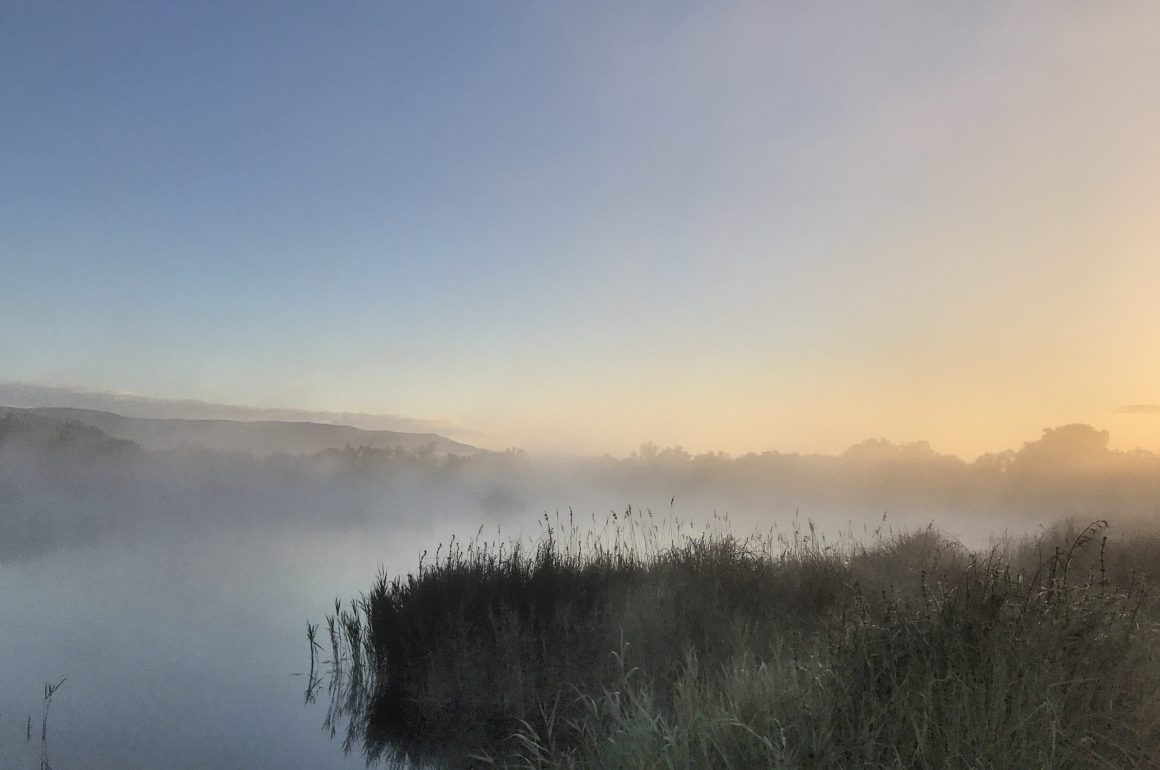
Actually, Eliza Doolittle would be pleased to know it doesn’t always stay just there. When I drove to Xábia at the end of April to visit my brother at his new house the rain was pretty much everywhere in Spain. After a long drought this was welcome news for the Spanish people, but for me it was a bit sour grapes. Finally going out to find me a Moustached Warbler and it’s raining. It could be worse, I guess, with hurricanes in Hertford, Hereford, and Hampshire.
Living almost on the most westerly point of the Iberian peninsula and having to go to the furthest easterly point makes for a bit of a drive. I split my trip into two days. I was going to Ciudad Real first (halfway) and then would be taking it easy the next day. The drive was pleasant with the occasional Black Kite crossing the road and a lot of smaller birds at the roadside, like Crested Lark, Common Swift, Barn Swallow, even a Hoopoe and an Iberian Magpie.
I had prepared for the trip reading Ernest Garcia’s Where to watch birds in Northern & Eastern Spain. From this excellent book I learned that near Ciudad Real lies the Parque Nacional Las Tablas de Daimiel. Tablas de Daimiel is apparently the smallest Spanish national park, but it does have quite a few Moustached Warblers, so size doesn’t matter, for once. The park consists of a part of the original Guadiana floodplains. It’s open from dawn till dusk.
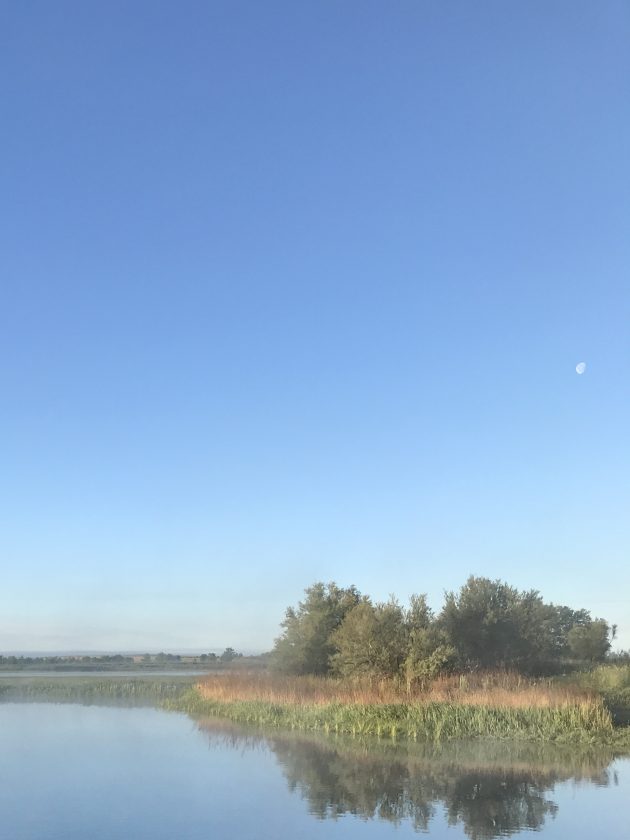
I drove to the park after checking in at my hotel. It was now later in the afternoon and while driving from Ciudad Real I became aware of the possibilities of staying much closer to the national park, in Daimiel. Mental note made, I parked the car and walked to the visitor centre. I checked whether the lady at the information desk spoke English (on your behalf, dear reader) and she told me she didn’t. However, she proceeded by telling me the park was open 365 days a year as if I should not blame her for one such tiny blemish. I wholeheartedly agreed! The park has signposted walkways, very clear information leaflets and the toilet blocks are luxurious. It’s all spotlessly clean. Only problem with a visit on a weekend afternoon: screaming people. This created a lot of difficulty in finding the skulking birds by ear, not helped by the fact that it was very windy. The Whiskered Terns couldn’t care less and did their own fair bit of screaming. After three or four downpours I decided to call it a day but not before stopping at the information centre once more. I asked for some intelligence on the warblers and a kind gentleman overheard and immediately joined the conversation. He pointed out his own favourite spots for seeing the Moustached Warbler – invaluable intel as it turned out the next day.
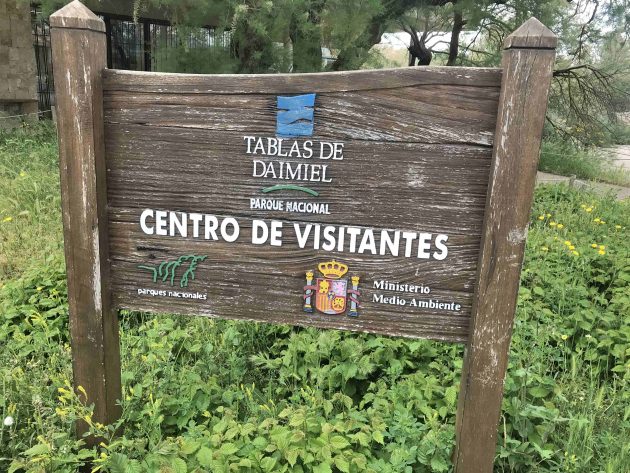
The next morning, I came back well before dawn. It was 1oC and a dense fog rose from the river. The boardwalks were frozen, but the wind had gone. I was all alone in a national park! Think about that statement next time you are in a bear jam in Yellowstone or surrounding a lion in Tsavo with 16 minibuses. I headed straight for the locations my newfound friend had told me about. My best friend, I should say, because although the warblers took a while to find, the reeds at his spots were full of Common Reed Warbler, Great Reed Warbler and two singing Savi’s Warblers.
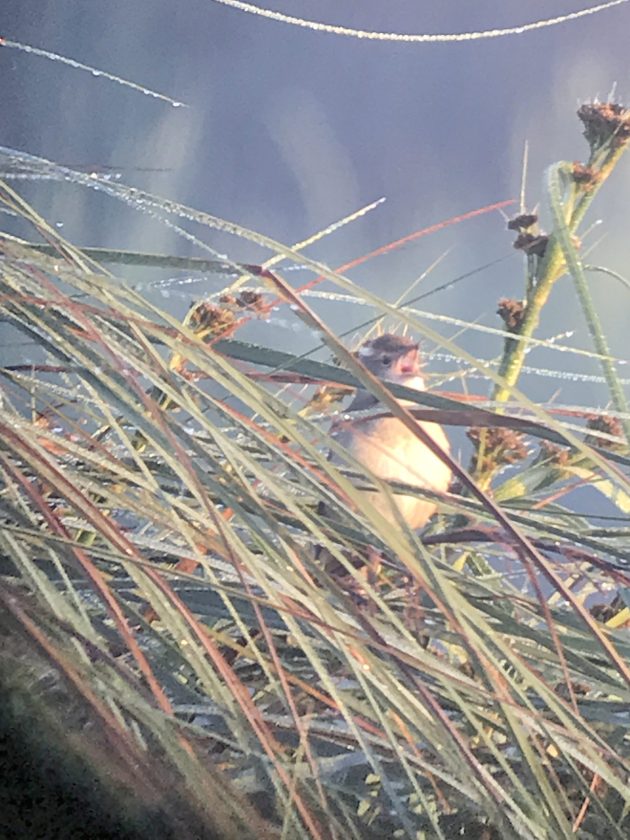
The surrounding scrub and woods were so chock-a-block with Common Nightingales that for once the word “common” was appropriate. The otherwise notorious skulkers Cetti’s Warbler and Garden Warbler were posing more perfectly than your average Instagram influencer. And of course, all this because I did not bring my camera… I managed to take some pictures of dubious quality using my scope and phone.
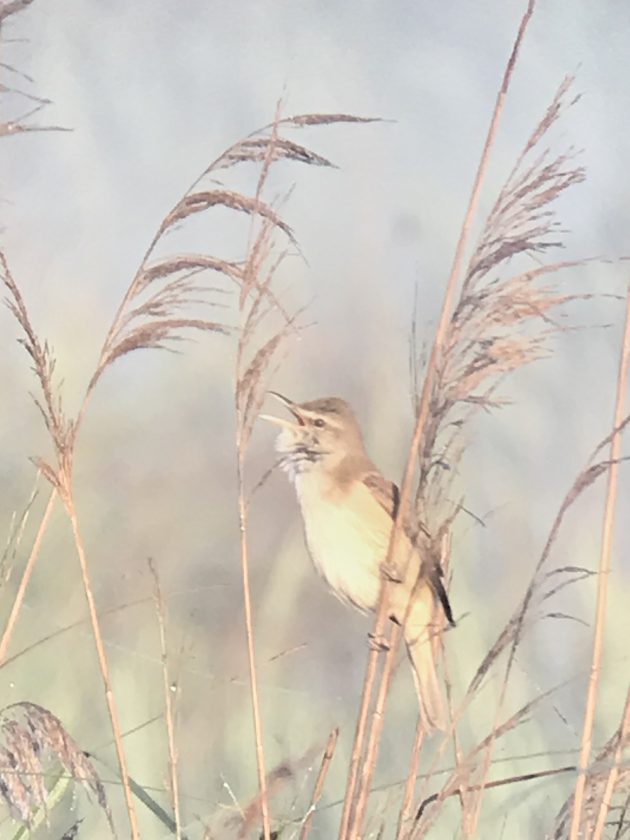
After a glorious morning I walked back to my car and met my new best friend again. He asked if I had seen the Carricerin Real (the Moustached Warbler) and he was genuinely pleased I had. He then proceeded by grilling me on all the specials. Yes, I had seen the Marbled Ducks, the Ferruginous Ducks and no, I had not seen the White-headed Duck… What? Go back and follow the red trail to the end, there will be dozens of them. No choice but to go back (how can one disappoint such a great friend?) and he was right, of course.
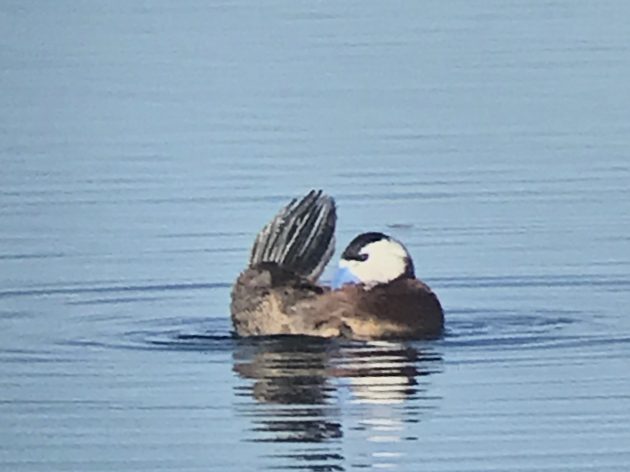
With my quarry in the bag and some bonus ducks I drove on to Xábia. The next couple of days were more about family than birding. The pressure was off anyway so I did only one more excursion even though I had planned to visit quite a few more sites. Accompanied by my nephew Max I visited the Marjal de Pego-Oliva, reputed to have about 15% of Spain’s Moustached Warblers.
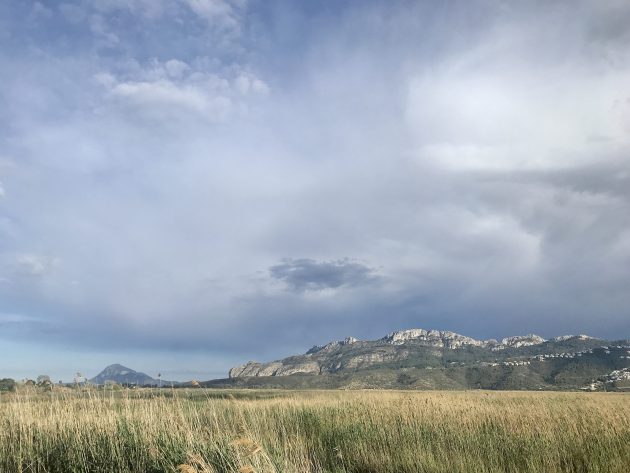
The Mediterranean coast is obviously warmer than the Spanish interior because the reeds in the Marjal stood three meters high, much higher than in Las Tablas. As a consequence, we saw very little movement. We did hear several warblers singing and Water Rail squealing, but the reeds were just too thick and tall. Late March and early April is probably a better time. There’s a watch-tower, a hide and a cycle path through the park. To reach the hide, take the CV-678 from the N-332 and turn left immediately after the bridge over the A-7. This is the exact opposite of the instructions in Garcia’s book, probably because the hide has been moved.
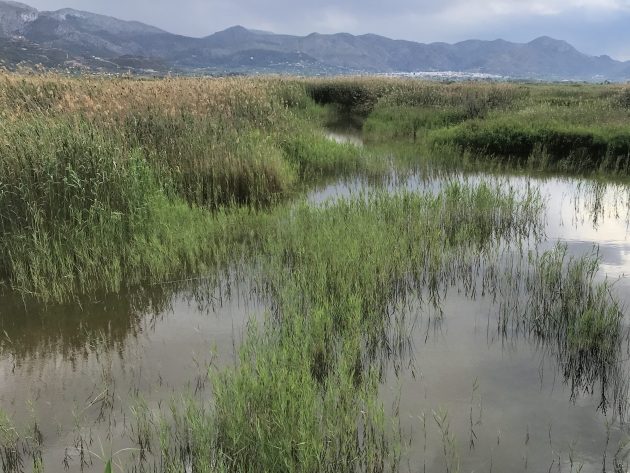
The way back to Lisbon: a full day, just driving. I can strongly discourage you from doing that. However, the last few hours were absolutely worth the trouble as I drove through springtime Extremadura and southern Portugal. The dehesas/montados were all freshly green and the wildflowers were blooming. I saw a kettle of Griffon Vulture near Trujillo with a pair of Raven and a few Black Kites mixed in. Very nice to observe such spectacle along the motorway. May is just an excellent time to visit Spain and Portugal. You can go to the beach or you can go birding – I am sure the birders will have a better time and less melanomas.













Since I will probably be visiting Spain each year for the foreseeable future (although always in the extreme south), your travel descriptions have me drooling.
Was your lack of a camera while on a roadtrip due to a vow made to a long-suffering birder’s wife? I can’t think of any other reason.
A vow? I wish. Forgetfulness.